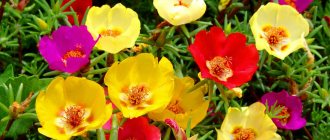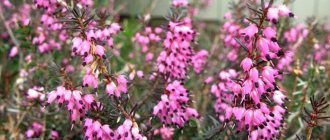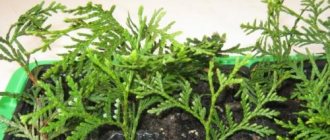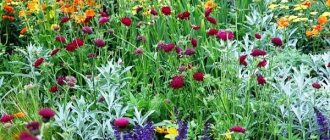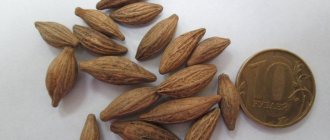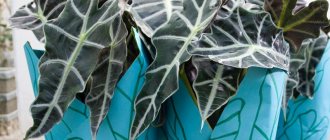Amaranth or amaranth (Amaranthus) is a very widespread genus, represented mainly by annual herbaceous plants. It is characterized by small flowers, which are collected in dense inflorescences of a spicate-paniculate type.
- Amaranth Illumination
Amaranth plant. What does it look like?
0
Amaranth is called Amaranthus in Latin. Other names of the plant are velvet, cockscomb, axamitnik, cat's tail, beetroot. In the forests, i.e. wild environment, a wild representative of amaranth, amaranth, grows. There are a lot of varieties of amaranth, and they are all divided into three groups: floral and decorative, silage, i.e. used as animal feed and vegetables. There are many opinions about which of them have useful and medicinal properties and which do not: some say that all varieties of cultivated amaranth are equally useful and medicinal, others say not. In my opinion, you should choose edible varieties, since when working on decorative varieties, preference is usually given to beauty to the detriment of other properties of the plant.
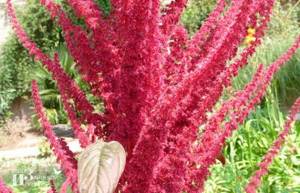
0

0

0
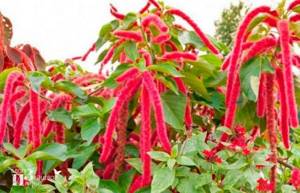
0
Amaranth grains (seeds) are eaten, from which cereals and flour are made. The leaves of the plant are used to prepare salads, sauces, soups and even cutlets. Amaranth seeds produce valuable amaranth oil, which in its properties is not only not inferior to sea buckthorn oil, but according to some data is superior to it. Amaranth is not only a food plant, but also a medicinal one. The grass of the plant is used as animal feed. The only pity is that, despite its enormous usefulness, the use of this plant is very limited, and it can usually be found in gardens as a malicious weed or as an ornamental plant near houses or in flower beds in parks.
General description of shiritsa
Shchiritsa is characterized by straight, powerful and branched stems. Reaches a height of up to 1.5 m depending on the species. The root has a rod structure, penetrates 20-30 cm deep. The leaves are large, large, often ovoid in shape. Flowers are collected in massive inflorescences hanging down. The leaves are green, dark purple, burgundy and even tri-colored, which combines yellow, red and green shades. Most species bloom from early summer until the first frost (October, first ten days of November).
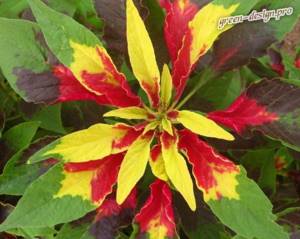
Tricolor amaranth (Amaranthus tricolor)
Types of amaranth
The description of the plant is determined by its variety, of which there are more than 90. Let's look at the most common types of agarica:
- Tricolor amaranth (Amaranthus tricolor). One of the most striking representatives of the plant. It is characterized by a riot of colors at the top of the plant, creating a flame effect. It grows in height from 40 to 150 cm, depending on the agricultural technology used. Flowers are collected in small panicles. The flowering period is from early June to November.
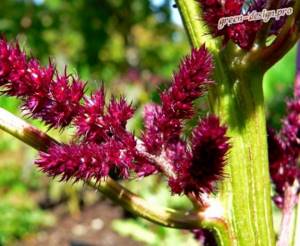
Paniculate or crimson amaranth (Amaranthus cruentus) - Amaranth (Amaranthus cruentus). The second name of the variety is due to the bright red color of the leaves. This is a powerful, erect plant, reaching a height of 30-100 cm. The flowers are small, red, collected in erect inflorescences. The budding period is from the second ten days of June until frost.
- Tailed amaranth (Amaranthus caudatus). The plant is large, erect, and has a branched structure. The leaves are long, bright green. Flowers are crimson, dark red and other crimson shades, collected in cascading inflorescences. Blooms throughout the summer.
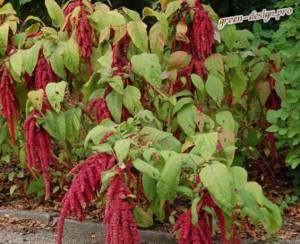
Tailed amaranth (Amaranthus caudatus).
Planting and care
Shchiritsa loves the sun, moisture and warmth. At the same time, it is afraid of the cold, dying during the first frost. Does not tolerate excessive soil moisture. The optimal soil acidity is neutral or slightly acidic. Amaranth should be planted in sunny areas, avoiding drafts.
Planting and caring for a plant depends on the method of its propagation - seeds or seedlings. Seeds should be sown in open ground no earlier than mid-May, when the soil is warm enough, otherwise the sprouts will not sprout. The earth should first be loosened a little by adding 5 kg of compost or humus per 1 m2.
When adding seeds to the soil, it is necessary to adhere to the minimum interval between each bush - at least 5-7 cm. This will provide enough space for normal growth and development of seedlings. Shoots appear 8-10 days after sowing. They need to be thinned out periodically, removing weak and thin plants.

To plant amaranth in a flowerbed at the beginning of June, you need to take care of the availability of seedlings in advance. To do this, seeds should be sown in boxes or greenhouses in late March - early April. In order to strengthen the root system, each sprout must be promptly transplanted into a separate cup.
Cultivation of shiritsa lasts throughout the entire growing season, since the plant requires regular care. The soil around the amaranth should be loosened; when it reaches a height of 20-25 cm, the bush should be hilled up. Immediately after planting, and in dry summers, the plant must be watered. At the same time, it is strictly forbidden to allow the soil to become waterlogged; the roots may die.
To get a lush bush, the top of the acorn plant should be pinched in mid-June. This stimulates the growth of side shoots.
You can fertilize the agaric no earlier than 2 weeks after planting it in its permanent place in the garden. To do this, you should use special fertilizers for foliage and ornamental flowers. To get abundant, unfading flowering, fertilizers need to be applied once every 2-3 weeks.
Amaranth plant. Chemical composition

0
In the process of numerous scientific studies, the unique chemical composition of amaranth was revealed. What makes it unique? Amaranth plant: contains a rich set of vitamins: beta-carotene, vitamins C and P, almost all B vitamins, which play a huge role for the proper functioning of the whole body: thiamine (B1), riboflavin (B2), niacin (B3 or PP), choline (B4), pantothenic acid (B5), pyridoxine (B6), folic acid (B9). Vitamin E is contained in the plant in a particularly active form. contains a rich set of macro- and microelements: potassium, calcium, magnesium, sodium, phosphorus, iron, manganese, copper, selenium, zinc. contains a large percentage of extremely valuable and unique plant protein, rich in the important amino acid lysine, as well as methionine and tryptophan, more valuable than the protein of mother's milk and squid meat. The seeds of the plant contain up to 77% of a whole complex of polyunsaturated fatty acids: linoleic, palmitic, stearic, oleic, linolenic. also contains other very important substances for the body: serotonin, red pigments, steroids. The leaves of the plant can be used as a rich source of vitamins C and P, the highest concentration of which is achieved during the flowering period. Particular attention should be paid to the valuable substance in the plant - squalene. Before scientists discovered the high content of this substance in amaranth (up to 10%), it was obtained from the liver of deep-sea sharks, where its content is only 1-2%, so it was extremely expensive. Squalene helps saturate the body's organs and tissues with oxygen, increases the body's protective functions, fights cancer, helps lower blood cholesterol levels, protects the body from the effects of radiation exposure, and has an antimicrobial effect. Squalene will also be appreciated by the fair sex, since this substance has the ability to rejuvenate the body at the cellular level in general, as a component of industrial cosmetics and homemade masks in particular.
Description and benefits of amaranth
The stem part is simple or branched, with alternate whole leaves of diamond-shaped, lanceolate or ovate shape. The apical part of the foliage has a notch and a small point. The axillary type flowers are arranged in bunches, and the apical ones are collected in fairly dense spike-shaped panicles. The fruits are presented in capsules with small seeds. The aboveground part of the plant is green or purple-red.
Despite the fact that amaranth is considered to be a weed and is mostly used for livestock feed, many people value it for its many beneficial properties . The main composition is represented by fats, proteins, carbohydrates, as well as dietary fiber or fiber. The presence of the tocotrienol form of vitamin E, fatty acids, the amino acid lysine, squalene, phospholipids and flavonoids is also noted. The plant is also rich in vitamins “A” and group “B”, niacin, ascorbic acid, pectin, microelements and macroelements.
The use of amaranth in folk medicine
Although amaranth is not officially recognized by medicine in the Russian Federation, it is widely used in folk medicine in many countries around the world. Amaranth is used for treatment: - as a therapeutic and prophylactic agent for diseases of the cardiovascular system, such as atherosclerosis, hypertension, and heart failure (angina); — various inflammatory diseases of the genitourinary system in men and women; - diseases of the gastrointestinal tract, such as gastric and duodenal ulcers, including chronic ones, infections, disorders; - liver diseases; - diseases associated with metabolic disorders, such as diabetes, obesity; - various skin diseases: eczema, psoriasis, fungal diseases, acne, herpes, as well as trophic ulcers, wounds, burns; — diseases of the nervous system: depression, neuroses, and also normalizes the functioning of the central nervous system; — diseases of the oral cavity, such as stomatitis, periodontitis; oncological diseases, radiation injuries (radiation sickness), hemorrhoids, anemia and vitamin deficiency, helps to increase immunity during colds, as well as loss of strength, etc. Amaranth is also used to cleanse the body of heavy metals, toxic substances and radionuclides.
Amaranth plant in cosmetology
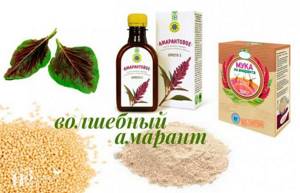
0
Amaranth has also found its application in cosmetology. Preparations based on the plant are used in the form of lotions, masks, compresses for facial skin care, which provides hydration, nutrition, softening and smoothing of wrinkles, the skin becomes fresh and velvety. In the form of rinses and masks, amaranth and its oil are used for hair care: they strengthen the hair roots, promote growth, restoration of structure, add elasticity and shine. An infusion of amaranth leaves or flowers is also used for baths.
Growing seedlings

Sowing amaranth seeds to produce seedlings at home is carried out at the end of March. For planting, ordinary seedling containers with nutritious and loose soil are suitable. The seeding depth is 2 cm.
Crops are placed in a warm place with good lighting. To prevent the seeds from being washed out, the soil is moistened with a spray bottle. The optimal temperature for keeping seedlings is 20-22 degrees Celsius. In such conditions, seedlings will germinate within a week.
If necessary, young shoots are thinned out, and when they grow up and produce one pair of leaves, they are planted in separate containers.
Amaranth seedlings are planted in the garden at the beginning of May. By this time, the soil will have warmed up well and the danger of the last frost will have passed. Despite the fact that planting and caring for this plant is not particularly difficult, for full growth and flowering it requires certain conditions - sunlight, loose, nutritious and light soil.
Seedlings are planted at a distance of 30 cm from each other. Young plants are watered regularly and, if necessary, covered during the onset of cold weather.

You can read about the beneficial properties of amaranth here.
Amaranth flour and amaranth seeds
In pharmacies or health food stores we can purchase amaranth seeds and amaranth flour. And there we can find products: cookies, bread, pasta and much more. In my opinion, it is very convenient and beneficial to take seeds and flour for health. Please note that the seeds are not black. They can be wheat-colored, golden, or light in color. Amaranth flour is great to use for those who love to bake. Instead of regular flour, use healthier amaranth flour. You can bake bread, cupcakes, and pies. And it’s good to make porridge from amaranth seeds. My advice for preparing amaranth porridge: take water and amaranth seeds in a ratio of 1:2 (1 part amaranth and 2 parts water), then start cooking like any porridge, and during the cooking process, you can add a little water. Look at the consistency to see who likes which porridge. And it’s better to cook it not in a saucepan, as we are used to, but in a frying pan - the area is larger, and it’s easier to control the cooking process. When the porridge is cooked, you can then add an apple or banana. Try it! I suggest watching a video on how to take amaranth seeds and flour for health benefits, what you need to pay attention to when choosing. Also, do not forget about amaranth oil, juice and sprouted seeds of the plant.
Species composition
Types of decorative amaranth:
- Caudate. The stems of caudate amaranth are erect, reaching a height of up to 150 cm. The leaves are large, green in color, slightly elongated. The panicle-shaped inflorescences hang down and have small flowers: yellow or red. The size of the inflorescences is up to 80 cm. They are grown using seedlings. It looks beautiful in the garden and retains its beauty for a long time when dried.
- Dark - practically does not branch, the stem is fleshy - up to 150 cm. It has lush purple inflorescences, spike-shaped. The leaves are green, pointed, slightly elongated.
- Paniculate - has an attractive shape. Small flowers of inflorescences: red, burgundy, purple - drooping or erect. The stem height is 150 cm, the leaves have an elongated top.
- Tricolor amaranth is a unique bush of rare beauty. The stems are erect, the plant shape is pyramidal. As a rule, 3 colors or more.
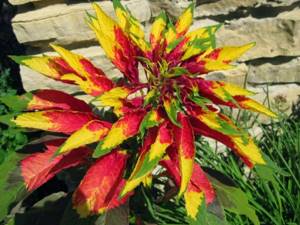
The photo shows a tricolor amaranth
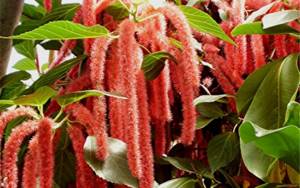
Tailed amaranth
Amaranth in all its beauty:
Cold infusion of amaranth
Pour dry amaranth leaves and/or flowers with cold boiled water in a ratio of 1 to 10, i.e. 1 part leaves to 10 parts water, leave for 15-20 minutes, strain. Take 0.5 tbsp. half an hour before meals 3 times a day. The resulting infusion is most often used for problems with the gastrointestinal tract. Amaranth infusion To prepare amaranth infusion, you usually take fresh leaves of the plant. 1 tbsp. pour 250 ml of chopped leaves. boiling water, cover with a lid, wrap and leave until cool, strain. Take 1/3-1/4 tbsp. 2-3 times a day half an hour before meals.
Amaranth juice
Fresh amaranth leaves are used to make juice. Rinse the leaves thoroughly under running water or changing the water several times, chop finely and pass through a juicer or meat grinder, squeeze out the juice. The resulting juice is diluted with boiled water in a ratio of 1:5 and used for rinsing during inflammatory processes in the mouth or throat. For normal use, the juice is mixed with liquid cream in a 1:1 ratio and taken 1 tbsp. 3 times a day half an hour before meals. This method has proven itself well for the treatment of diabetes, pain in the liver, and inflammatory processes in the stomach.
Salad with amaranth

0
As a healthy remedy, it is good to use various salads with amaranth leaves. They taste like spinach and go well with other ingredients. Amaranth leaves, as I already wrote, are an excellent source of vitamins C and P, which together are responsible for the elasticity and permeability of blood vessels. In addition, in this form we have the opportunity to consume fresh leaves. Let me give you an example of a recipe for one such salad, which was sent to me by a reader of my blog. Recipe: 200 gr. amaranth leaves, 200 gr. Wash young nettle leaves well, pour boiling water over them and chop finely. Add 50 gr. chopped wild garlic leaves or young garlic feathers. Salt the resulting salad and season with vegetable oil. You can add sour cream or mayonnaise if desired, as well as a couple of boiled eggs.
